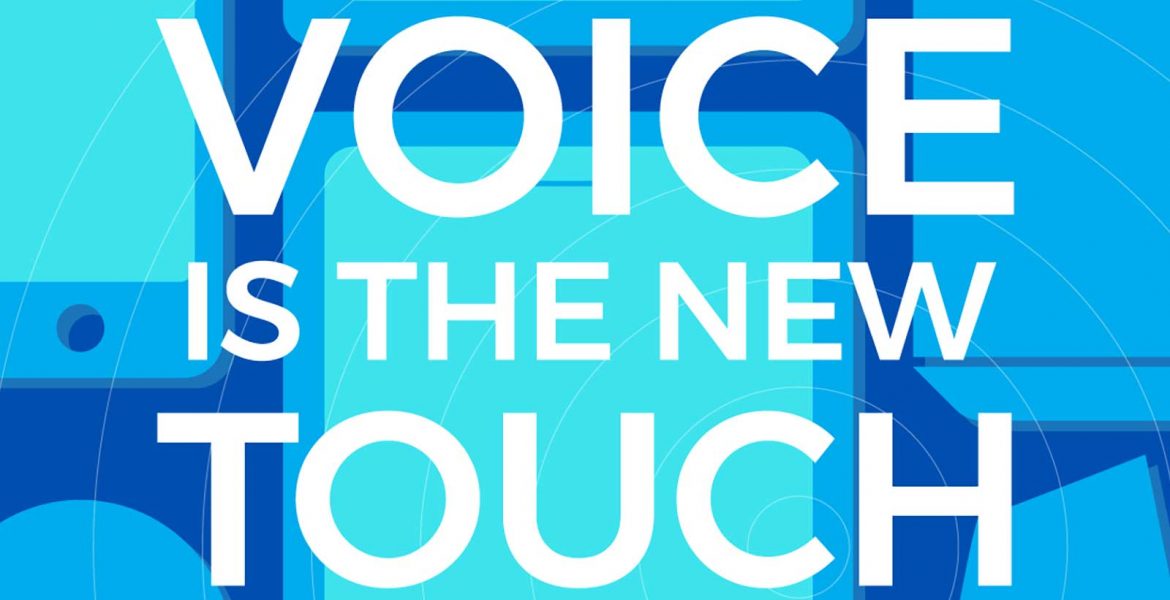The year 1983 doesn’t just mark the launch of one of the biggest hit singles ever (Michael Jackson’s “Billy Jean”), it also marks an important milestone in the world of technology. The first commercialized computer mouse hit the scene the same year, offering people a chance to control their computer with touch instead of key commands. And ever since then, we’ve been obsessed.
The point-and-click mouse eventually gave way to the trackpad and then the touchscreen, giving us even easier ways to engage with technology using a simple touch or tap. But as our devices have become more intelligent and the concept of the “Internet of Things” has become a reality (the number of IoT devices is expected to jump from 6.6 billion to 22.5 billion by 2021!), we find ourselves in the midst of a new wave of tech innovation, this time centered around voice.
What we’re beginning to experience is seamless connectivity at its best. With voice-enabled devices hitting the market from Apple, Amazon and Google, now all it takes is a simple voice command to turn on your lights, lower your thermostat, listen to the news and much more. Yet with more voice technology entering our lives, marketers need to realize that it’s audio that now has our attention. No longer can brands solely rely on visual advertising because there’s no guarantee a consumer will see your message anymore–they’ll be hearing it instead.
Voice Takes the Lead in a Screenless World
Voice-activated-everything is spreading like wildfire. A recent study by Park Associates found that the adoption rate of smart speakers with integrated voice assistants grew 140% last year alone. Music tends to be a leading activity on these devices and, among Pandora’s listeners, we’ve seen listening on smart speakers grow by a whopping 282% year-over-year.
To give this even more context, let’s compare the adoption rate of smart speakers to another common in-home device: the television. While it took many years for a single household to own multiple TVs, it’s already common for people to have several voice-activated devices throughout the home. In fact, according to new data from Pandora and Edison Research, a third of smart speaker owners already have two or more devices in their homes.
Technology That Feels More Natural and “Human”
We do have to ask ourselves: why now? Voice assistants aren’t exactly new (Siri launched in 2011) and touchscreens aren’t exactly outdated.
On one hand, advancements in voice recognition technology are making these devices more affordable and accessible to the general public. Especially in the home, voice-activated devices are quickly becoming ubiquitous. On the other hand, perhaps the most compelling reason for this surge in popularity is how “human” it feels. There’s nothing more personal than communicating with your voice, and that makes our interactions with technology feel more natural and thus more desirable.
Pandora and Edison Research recently partnered together to understand exactly how consumers are using these devices. Together, we examined the interaction history from over 400 smart speaker users. In addition to listening to music and shopping for household goods, we also found personal, human-like interactions ranked especially high.
According to our study, within any given week 46% of smart speaker users check the weather, 42% want to hear a joke and 40% like to ask general questions. It’s interesting that something so “human” as telling a joke outranks even the most practical (asking a general question). You can check out the other interesting insights we discovered in this infographic:
Marketers: Unleash the Power of Audio
A byproduct of this shift from screen-centered to voice-centered technology is a huge increase in the time people spend with audio. In fact, 7 in 10 people who own a smart speaker report listening to more audio in the home since acquiring it, and 65% say they listen to more music too. With the IAB already estimating that 79% of our audio consumption takes place in moments when visual media cannot reach us, we can only guess how much more of our time will be spent with audio-only content once voice-enabled devices reach saturation.
For both content creators and brands looking to reach a connected audience now and into the future, audio has never been a more pertinent or powerful platform to do so. This marks a massive shift in how brands need to think about communicating their message. Marketers of all industries should seriously consider their brand’s Sonic Identity. This includes everything that creates the “sound” of a brand–from a sonic logo, to a musical jingle, to the voice profile of the actor. Put together, these elements form a powerful, auditory representation of the brand that will successfully reach consumers in a screenless world.
To learn more about how to get started with an audio strategy, visit PandoraForBrands.com.


